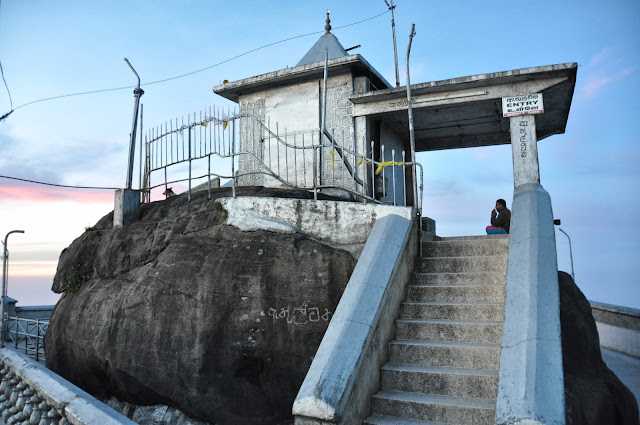Adam's Peak is one of the most recognisable places in
Sri Lanka, yet many people are not aware of the island's famous
mountain until they visit it for themselves on their Sri Lanka holidays.

The mountain is held in sacrosanct by followers of four religions: Buddhists, Hindus, Christians and Muslims.

However, long before any of these religions appeared on the island,
the mountain was worshipped by the native inhabitants of the island, the
Veddas. They named the peak Samanala Kanda after one of the island's
four deities. Hindus also have a different name for the peak and call it
Sivan Adi Padham. They believe that the giant footprint left on the
peak is Shiva's and was left on the mountain during his creation dance
when he created the world.

The large footprint is five foot seven inches by two foot six inches
wide, but Buddhists believe that the original footprint is even larger
and was left by the Buddha on his third and final visit to Sri Lanka. If
you are a follower of the Christian religion, then on your Sri Lanka
holidays, you'll most probably hear the story of St. Thomas, who brought
Christianity to the island. However, the mountain gets that name "Adam"
from the Islamic belief that he stood for a thousand years on one foot
as penance. The Islamic tradition tells how, when Adam was expelled from
heaven, God put him on the peak to make the shock less terrible. This
is because Ceylon was believed to the place on earth that most resembled
heaven, with Adam's Peak being the closest spot on earth to heaven.

On your Sri Lanka holidays you may want to take a boat trip around the
peak as the mountain is most impressive when viewed from the sea. Marco
Polo was among one of the explorers who visited. Early Arab seafarers
who spotted the peak, described it as the largest mountain in the world.
However, the peak is not even the largest in Sri Lanka.

If you want to hike around the island, then the best time to visit is
from December to May. This time is popular with pilgrims and gets
busiest in the winter months of January and February. The trek takes
about four hours and although it is possible to climb Adam's Peak from
June to November, mist and rain make the climb much less appealing.

When climbing the mountain on your Sri Lanka holidays you will spot
hundreds of beautifully coloured butterflies on your climb, which have
earnt Adam's Peak its nickname, Samanalakande or butterfly mountain.
Once you've reached the top, you will notice a small Buddhist temple and
the shrine of the strange footprint. It is customary to make offerings
here and small coils of silver are offered by those wanting to recover
from sickness. Rainwater that falls in the footprint is also said to
have special healing properties.

Your Sri Lanka holidays just won't be complete without taking a visit
to Adam's Peak and after spending time on the spectacular mountain,
you'll understand just why the Islamic tale describes it as the closest
place on earth to heaven.
Reposted from eSriLankans.com



















